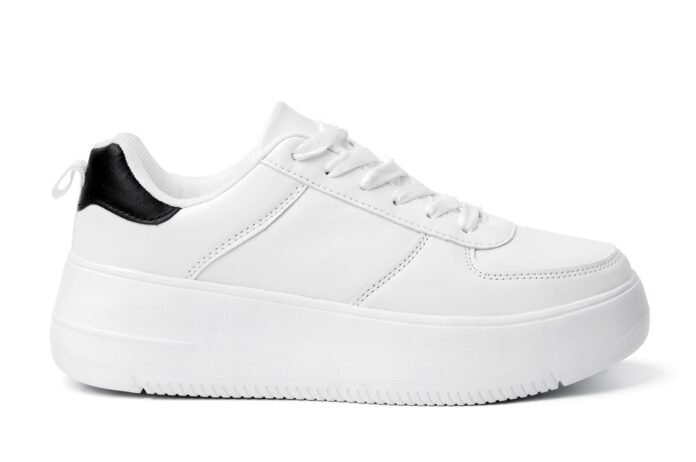Tennis is a sport that demands agility, speed, and precision, making the right footwear essential for optimal performance. Women’s tennis shoes are specifically designed to provide stability, cushioning, and traction, ensuring players can move swiftly across the court while minimizing the risk of injury. Beyond functionality, modern tennis shoes also incorporate stylish designs, allowing athletes to express their personality on and off the court. Whether you’re a competitive player or a recreational enthusiast, choosing the right pair can significantly impact your game. In this guide, we’ll explore the key features of women’s tennis shoes, the different types available, and tips for selecting the perfect pair based on your playing style and court surface.
1. Key Features of Women’s Tennis Shoes
Women’s tennis shoes are engineered with specialized features to enhance performance and comfort. One of the most critical aspects is support and stability, as lateral movements in tennis require shoes that prevent ankle rolling. Many models include reinforced outsoles and midsoles to provide extra structure. Cushioning is another essential factor, as it absorbs impact during quick sprints and jumps, reducing stress on joints. Additionally, traction and durability are vital, with outsoles designed for specific court surfaces—clay, hard, or grass—to ensure proper grip without wearing out too quickly. Breathable uppers made from lightweight materials also help keep feet cool during intense matches.
2. Types of Women’s Tennis Shoes for Different Court Surfaces
Not all tennis shoes are suitable for every court type, and selecting the right pair can make a significant difference in performance. Hard court shoes are the most common, featuring durable rubber soles with herringbone or modified tread patterns to withstand abrasive surfaces while providing excellent traction. Clay court shoes have a full herringbone outsole pattern to prevent clay buildup, allowing for smooth sliding movements. Grass court shoes, less common but essential for players on natural turf, typically feature small nubs or pimples on the sole for grip without damaging the surface. Understanding these differences ensures you pick shoes that enhance your game on your preferred court.
3. How to Choose the Right Fit for Your Playing Style
Finding the perfect tennis shoe goes beyond size—it should match your playing style and foot type. Aggressive baseline players who rely on powerful lateral movements need shoes with maximum stability and reinforced toe guards for durability. Serve-and-volley players, who move quickly toward the net, benefit from lightweight shoes with responsive cushioning for fast direction changes. Additionally, women with high arches may require extra arch support, while those with flat feet might need motion control features to prevent overpronation. Trying on multiple pairs and testing them with quick side-to-side movements can help determine the best fit for comfort and performance.
4. Top Brands and Models in Women’s Tennis Footwear
Several leading brands dominate the women’s tennis shoe market, each offering unique technologies tailored to players’ needs. Nike is renowned for its Zoom Air cushioning and sleek designs, with popular models like the NikeCourt Air Zoom Vapor favored by many professionals. Adidas combines performance with style, featuring Boost cushioning in models such as the Adidas StellaCourt for energy return and comfort. ASICS focuses on stability and support, with the Gel-Resolution series being a top choice for players needing extra foot protection. New Balance offers wider fits, making their Fresh Foam Lav ideal for those requiring additional toe space. Exploring these brands helps in finding a shoe that aligns with both performance needs and personal aesthetics.
5. Maintaining Your Tennis Shoes for Longevity
Investing in a quality pair of women’s tennis shoes is only the first step—proper maintenance ensures they last longer and perform well. Regularly cleaning the outsoles removes dirt and debris that can affect traction, while airing them out after matches prevents odor buildup. Rotating between two pairs of shoes can extend their lifespan by allowing cushioning materials to decompress between uses. Additionally, avoiding wearing tennis shoes off-court preserves their specialized tread patterns and support structures. Checking for worn-out soles or decreased cushioning helps determine when it’s time for a replacement, as worn shoes can lead to discomfort and increased injury risk.
Conclusion: Elevate Your Game with the Right Tennis Shoes
Choosing the best women’s tennis shoes involves considering court surface, playing style, and individual foot mechanics. The right pair enhances performance, reduces injury risks, and keeps you comfortable during long matches. With top brands continuously innovating in cushioning, stability, and design, there’s a perfect shoe for every player. By understanding key features, maintaining your footwear, and selecting models that suit your needs, you can step onto the court with confidence, ready to play your best game. Whether you’re a beginner or a seasoned competitor, the right tennis shoes are a game-changer in every match.


